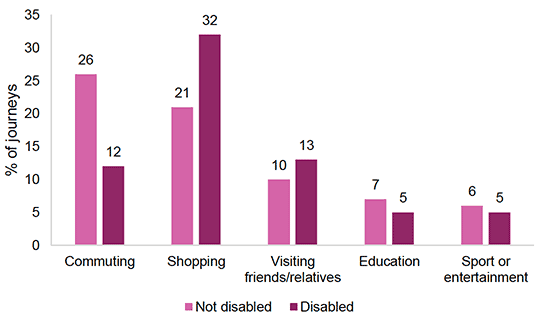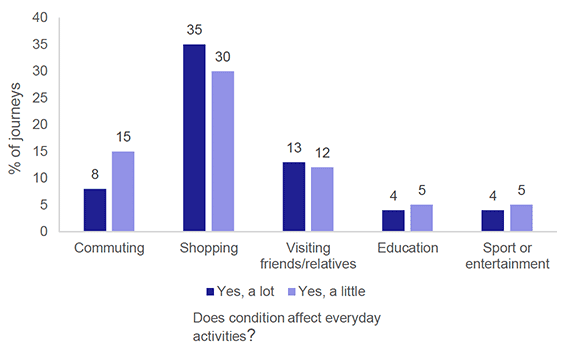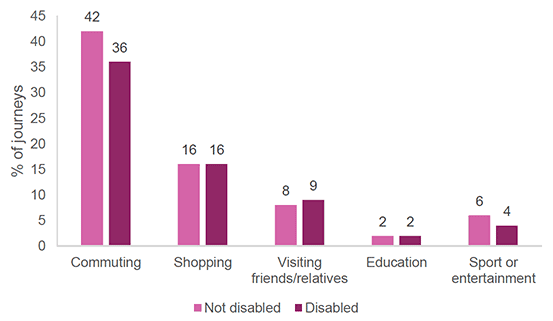Purpose of journey
Purpose of journey
A smaller percentage of the journeys of disabled people were to work (12%, compared to 26% for those who are not disabled) and greater percentage of the journeys of disabled people were to the shops (32% compared to 21%). [Figure 10]

For those whose disabilities reduced their ability to carry out day-to-day activities a lot, these discrepancies were greater (8% of journeys were to work and 35% to the shops), whereas those disabled people with no difficulty carrying out day-to-day activities, these figures were closer to those of people without a limiting condition (15% to work and 30% to the shops). [Figure 10]

When looking at only those in full-time work, there was greater similarity between disabled and non-disabled people. The percentage of journeys for commuting was 42% for disabled adults compared to 36% for non-disabled adults, and shopping was equal at 16% for both groups. [Figure 11]
